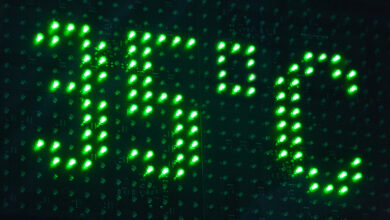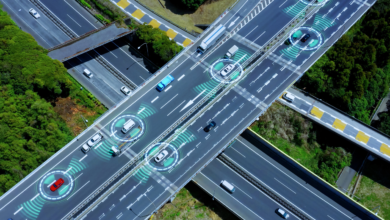Wireless Power Transfer in Technology

A cutting-edge technology called wireless power transfer makes it possible to transmit electrical energy from a power source to a receiving device without the use of physical wires or direct electrical contact. The fundamental building blocks of wireless power transfer are electromagnetic induction and resonant coupling. Between a transmitting coil, frequently integrated into a charging pad or other device, and a receiving coil built into the target device, electromagnetic fields are created. When these coils are close together, an alternating current flowing through the transmitting coil creates a magnetic field, which then induces a voltage in the receiving coil. The device’s battery can then be charged or powered by this induced voltage, which can then be converted back into electric current. Both near-field and far-field wireless power transfer techniques are possible. Near-field techniques, like inductive coupling, involve close-range transmission with a small gap between the coils. To transmit power over greater distances, far-field methods, on the other hand, employ strategies like radio frequency energy harvesting. Consumer electronics, medical devices, automotive applications, and infrastructure are just a few of the sectors where wireless power transfer is being developed and adopted. While issues with compatibility and power efficiency still exist, ongoing research and advancements are pushing the limits of this technology and holding out the hope of a future without wires and with greater convenience.
Advantages / Importance of Wireless Power Transfer
- Convenience and mobility have been improved: In a world where technology permeates every aspect of our lives, wireless power transfer stands as a beacon of convenience. The elimination of cords and cables liberates us from the restrictions of stationary charging and enables effortless mobility. Smartphones, wearables, and wireless earbuds can all be charged by simply setting them down on a charging pad, simplifying daily tasks and getting rid of the hassle of tangled wires. Our ability to integrate technology into our daily lives without constantly looking for power outlets is improved by this newfound ease of use.
- Electric mobility revolutionizing: Wireless power transfer may be crucial in determining the direction that the automotive industry takes in the coming years. As environmentally friendly alternatives to conventional internal combustion engine cars, electric vehicles (EVs) have gained popularity. The way we fuel our vehicles could be completely changed by wireless charging for EVs. The range of electric vehicles (EVs) could be significantly increased and the need for frequent stops at charging stations eliminated by integrating charging technology into parking lots or roadways. This development might hasten the uptake of electric vehicles, lowering our reliance on fossil fuels and reducing the environmental impact.
- Efficiency and energy conservation: Energy can be saved significantly thanks to the effectiveness of wireless power transfer systems. Due to resistance in cables and connections, conventional wired charging techniques frequently experience energy losses. When developed with high efficiency, wireless power transfer technologies can reduce these losses and increase the efficiency of energy transmission. This is crucial when discussing renewable energy sources because effective distribution and integration are essential for maximizing the advantages of clean energy. Wireless power transfer can help create a more sustainable energy environment by reducing energy transmission process waste.
Uses in Daily Life
- Consumer electronics: In the world of consumer electronics, wireless power transfer has many uses. The technology provides a seamless and practical way to recharge devices, including laptops, wireless earbuds, smartwatches, smartphones, and smartwatches. The user experience is made simpler because dealing with multiple charging cables and connectors is no longer necessary. For instance, Qi wireless charging is now a common feature in many smartphones, allowing users to charge their devices by simply setting them down on a charging pad that is compatible.
- Medical Devices: Wireless power transfer has found widespread adoption in the medical industry. Wireless charging is advantageous for implantable medical devices because it eliminates the need for invasive procedures to change batteries, such as pacemakers and neurostimulators. In addition to recharging wearable medical devices like hearing aids and insulin pumps, wireless power can also be used to improve patient comfort and compliance with treatment plans. Additionally, wireless power transfer eliminates the need for exposed charging ports in medical settings where cleanliness is of the utmost importance, lowering the risk of contamination.
- Industry and the Internet of Things: To increase efficiency and flexibility, businesses and Internet of Things devices also use wireless power transfer. Energy gathered from ambient radio frequency signals or magnetic fields can be used to power sensors, actuators, and other low-power IoT gadgets. This gets rid of the need for complicated wiring setups in difficult-to-reach places or frequent battery replacement. Wireless power can help smart infrastructure elements and industrial automation systems operate more quickly and adaptably.
- Smart cities and public infrastructure: Urban infrastructure and the idea of smart cities may change as a result of wireless power transfer. Electric buses and vehicles could be powered while in motion by charging infrastructure built into the roads. Offering wireless charging stations for smartphones and other devices in public areas like parks and plazas would increase user convenience. Furthermore, without being constrained by conventional wiring, wireless power could support the installation of energy-efficient streetlights, sensors, and other smart city technologies.
- Application Enabling for Remote and Difficult Applications: Wireless power transfer is a game-changer in situations where conventional power transmission techniques are difficult or impractical. Wireless power delivery solutions can be a lifeline in remote areas or disaster-affected areas that lack the necessary infrastructure. Humanitarian efforts can create temporary power sources without the need for difficult installations by transmitting power wirelessly. As an example of how this technology might be used in industrial settings, sensors and devices could be powered in potentially dangerous locations where physical connections might be risky or impractical
Conclusion
The development of wireless power transfer represents a paradigm shift in our technological development and brings with it a wide range of advantages, including convenience, sustainability, mobility, and connectivity. Its potential to transform how we use devices and interact with them, reshaping entire industries and promoting a more effective and environmentally friendly way of life, serves as a powerful indicator of its significance. The impact of this technology is extensive, ranging from improving the practicality of everyday technological interactions to revolutionizing the world of electric mobility through wireless charging of vehicles. It is impossible to overstate the importance of wireless power transfer for energy conservation, especially when it comes to renewable energy sources because it helps create a more sustainable energy ecosystem.



